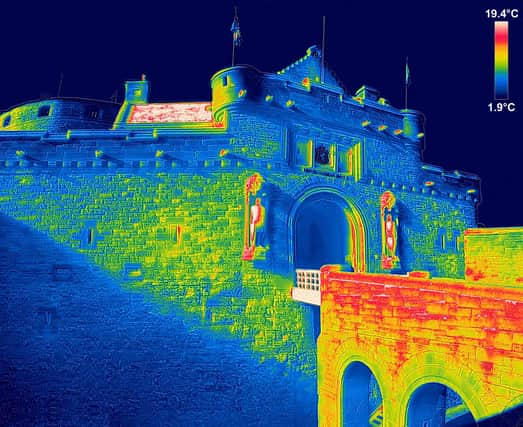Edinburgh Castle has carbon emissions equal to 348 UK homes


Now the climate change record of Edinburgh Castle and four other historic sites in the capital have been unravelled to track their impact on the environment and how, in turn, changes to the environment are impacting them.
Despite standing for hundreds of years, some buildings are now struggling to cope with the consequences of climate change with fluctuations in temperature – both hot and cold – leading to structural problems and decay in some instances.
Advertisement
Hide AdAdvertisement
Hide AdA new app launched by Historic Environment Scotland brings together climate and conservation science, as well as mitigation measures for the five sites which also include Charlotte Square, Scott Monument, General Register House and Calton Hill.
Dr Lyn Wilson, Head of Programme for Technical Research and Science at HES said: "We hope that the Climate Change Explorer app will encourage and support members of the public to engage with and better understand the impacts that climate change is having on Edinburgh’s historic built environment, and the adaptation options that should be considered.”
Edinburgh Castle is said to use an “incredible” amount of energy and produces some 1,155 tonnes of carbon dioxide emissions per year .
The castle’s total energy use has been driven down by 30 per cent and its emissions by 40 per cent since 2008/09 as new boilers – as well as the sheepskin insulation - are among measures to better control loss of heat through the historic structure.
Also covered by the app are the innovations – both old and new – that improve environmental credentials at the five sites.
At St Andrew’s House on the South Side of Calton Hill, the largest metal-framed building in Europe, a solution to mitigating the impact of increased rainfall has been found.
Dr Wilson said: “Here, a novel system had been installed, which uses electrical pulses to stop the metal frame corroding as fast.”
At General Register House on Princes Street, which was built to maximise natural light and ventilation, a heating system, like those used to heat Roman baths, was installed by architect William Adam to protect the archives from damp.
Advertisement
Hide AdAdvertisement
Hide Ad“It was a sort of clever underfloor heating system inspired by the Romans,” Dr Wilson added.
Thermal images of a number of sites, including General Register House and Edinburgh Castle, illustrate heat loss while the long-term impact of pollution is also tracked. The Scott Monument serves as a case study given the statue of the writer and his dog, which is made from white Carrara marble, is at risk from environmental changes.
Dr Wilson said: “The stone is quite vulnerable to climate change, with the marble also vulnerable to soot damage and pollution. You start to get this gypsum crust, which forms an impenetrable layer on the statue, which can then trap water and pollution inside.”
Meanwhile, at Charlotte Square, the decay of ornate stonemasonry due to changing weather and the arrival of warmer weather plants in the garden, is also explored.
The app can be downloaded from Google Play, the Apple Store or the HES website.